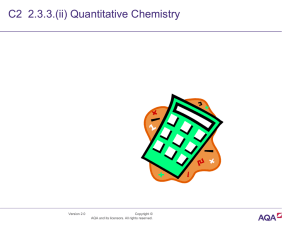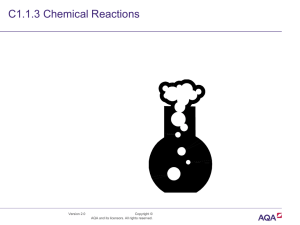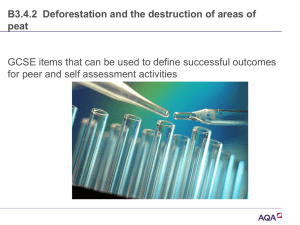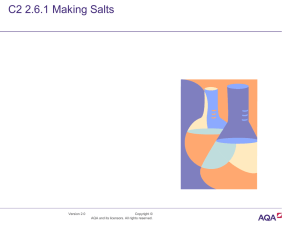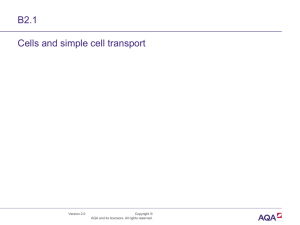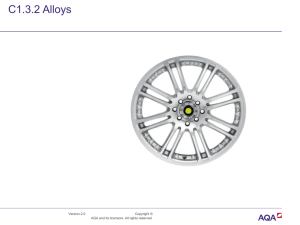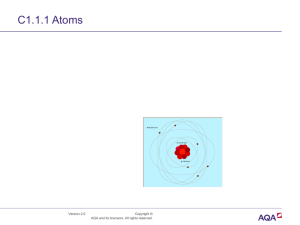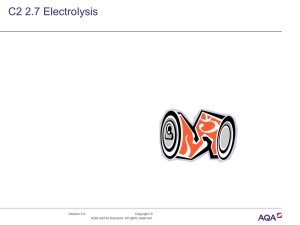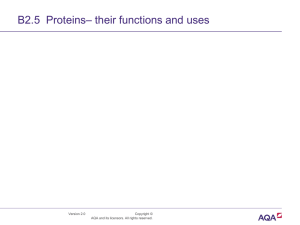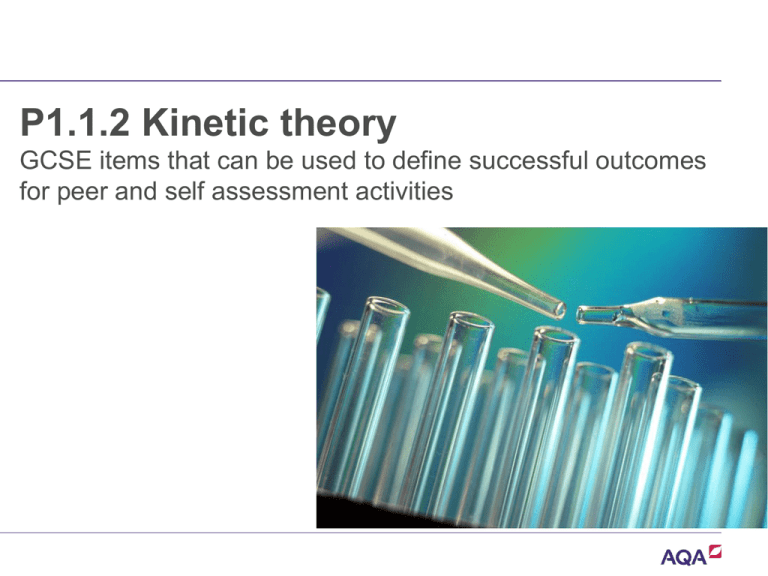
P1.1.2 Kinetic theory
GCSE items that can be used to define successful outcomes
for peer and self assessment activities
•Assessment of practical work
Using Exam pro items to support successful
outcomes
Learners will be able to test their progress against learning
outcomes using questions taken from past AQA GCSE
questions.
Version 2.0
Copyright © AQA and its licensors.
All rights reserved.
Q1 foundation Exampro QSP1403
Version 2.0
Copyright © AQA and its licensors.
All rights reserved.
Q1 Use words from below to complete the following
sentences. Each word can be used once, more than once or
not at all.
Solid
Liquid Gas
(a) The particles in a ............................................ vibrate about fixed
positions (1)
(b) The particles in a .......................................... move at high speed in
any direction (1)
(c) The particles in a ............................................ are arranged in a
pattern (1)
3 marks
Version 2.0
Copyright © AQA and its licensors.
All rights reserved.
Q1 mark scheme
a) Solid 1
b) Gas 1
c) Liquid 1
(3)
Version 2.0
Copyright © AQA and its licensors.
All rights reserved.
Q2 Higher AQA-PH1FP-QP-Jan12 Q5
5 (a) The diagrams show the arrangement of the particles in a solid and
in a gas.
Each circle represents one particle.
Q2 contd.
5 (a) (i) Complete the diagram below to show the
arrangement of the particles in a liquid.(2 marks)
5 (a) (ii) Explain, in terms of the particles, why gases are easy
to compress (2 marks)
Version 2.0
Copyright © AQA and its licensors.
All rights reserved.
Q2 contd.
b) The diagram below shows the model that a science teacher used to show
her students that there is a link between the temperature of a gas and the
speed of the gas particles.
The ball-bearings represent the gas particles. Switching the motor on makes
the ball-bearings move around in all directions.
Version 2.0
Copyright © AQA and its licensors.
All rights reserved.
Q2 contd.
(b) (i) How is the motion of the ball-bearings similar to the motion of the
gas particles?
(1 mark)
(b) (ii) The faster the motor runs, the faster the ball-bearings move.
Increasing the speed of the motor is like increasing the temperature of a
gas.
Use the model to predict what happens to the speed of the gas particles
when the temperature of a gas is increased.
(1 mark)
Version 2.0
Copyright © AQA and its licensors.
All rights reserved.
Q2 mark scheme
Version 2.0
Copyright © AQA and its licensors.
All rights reserved.

